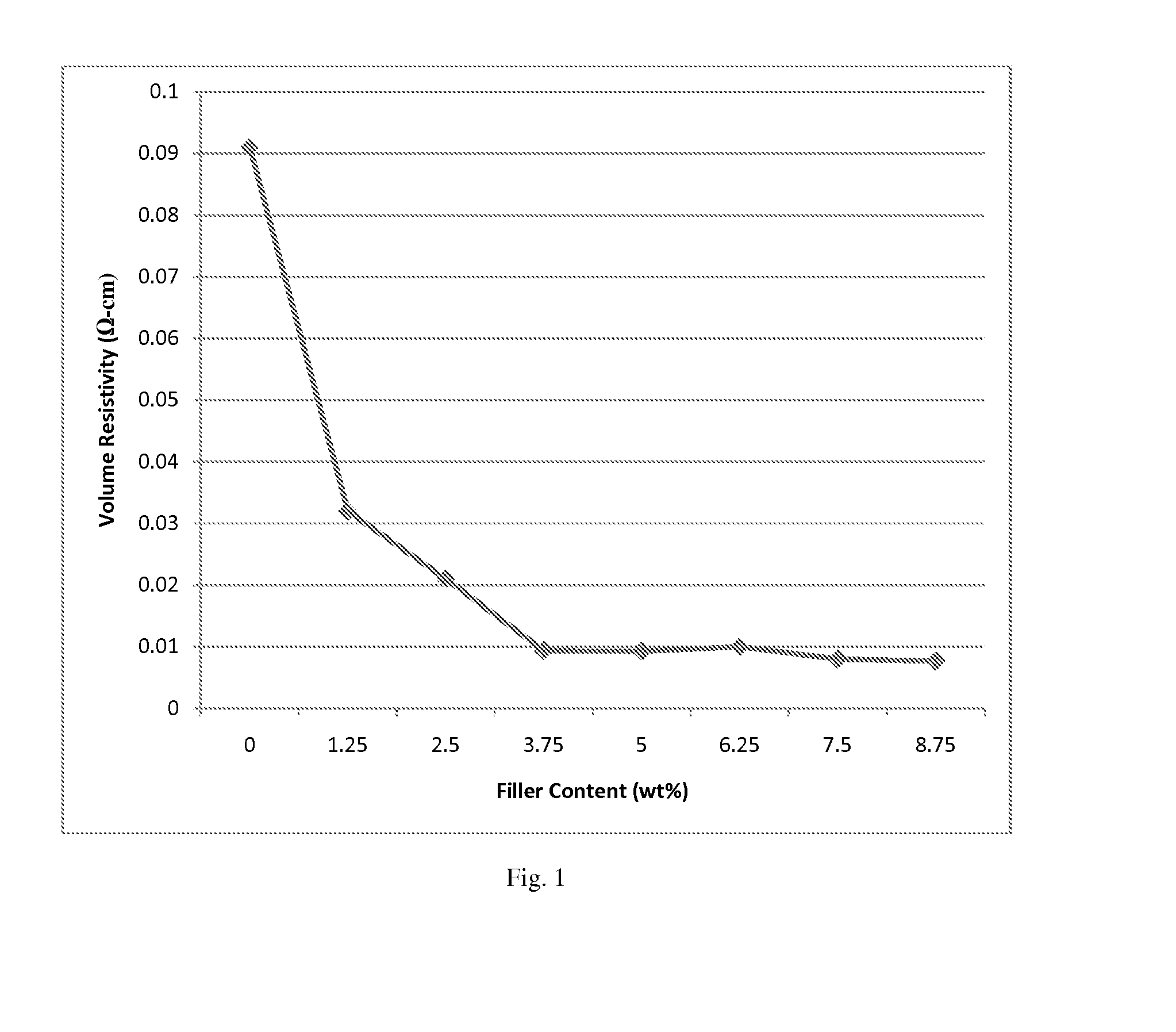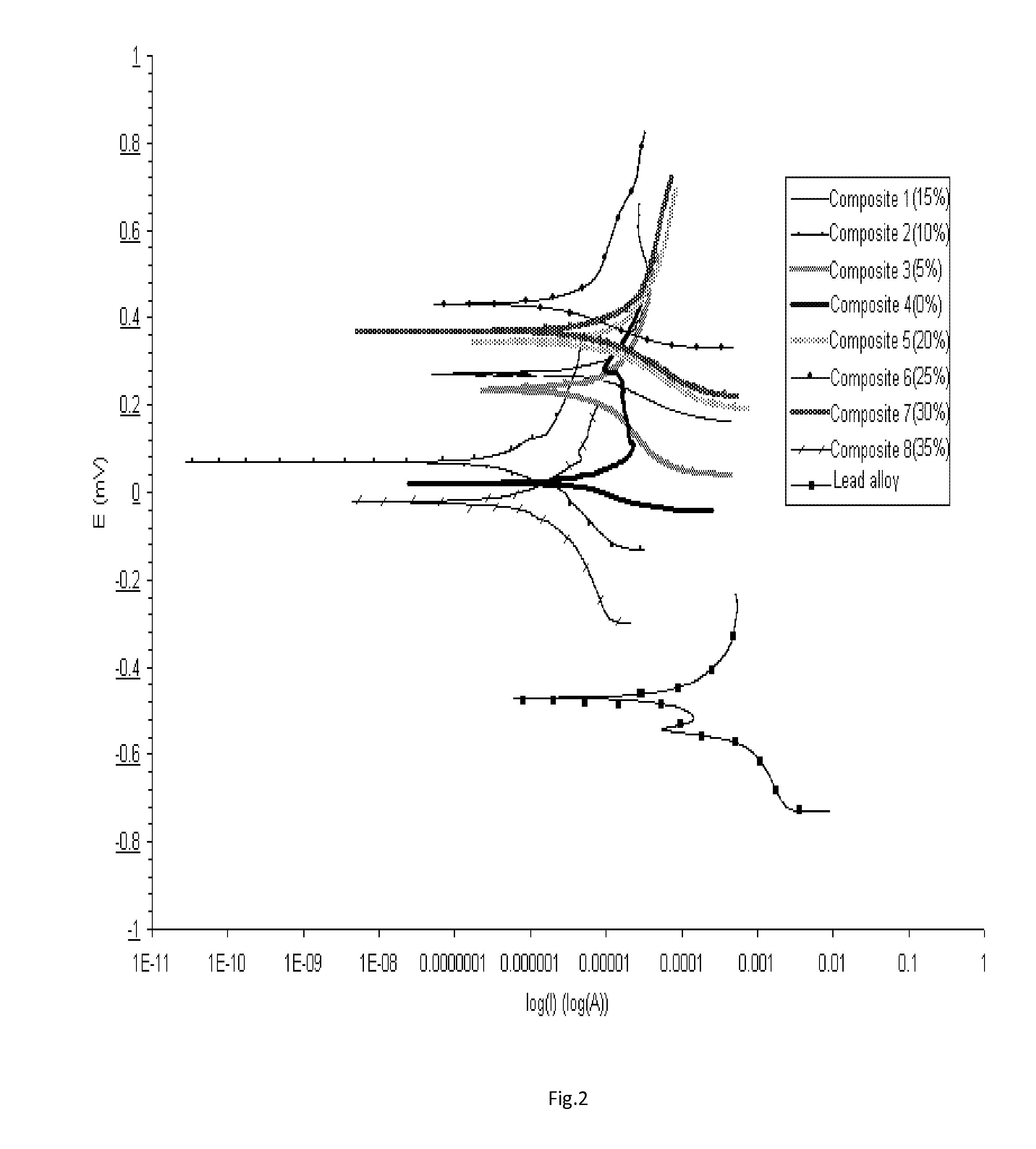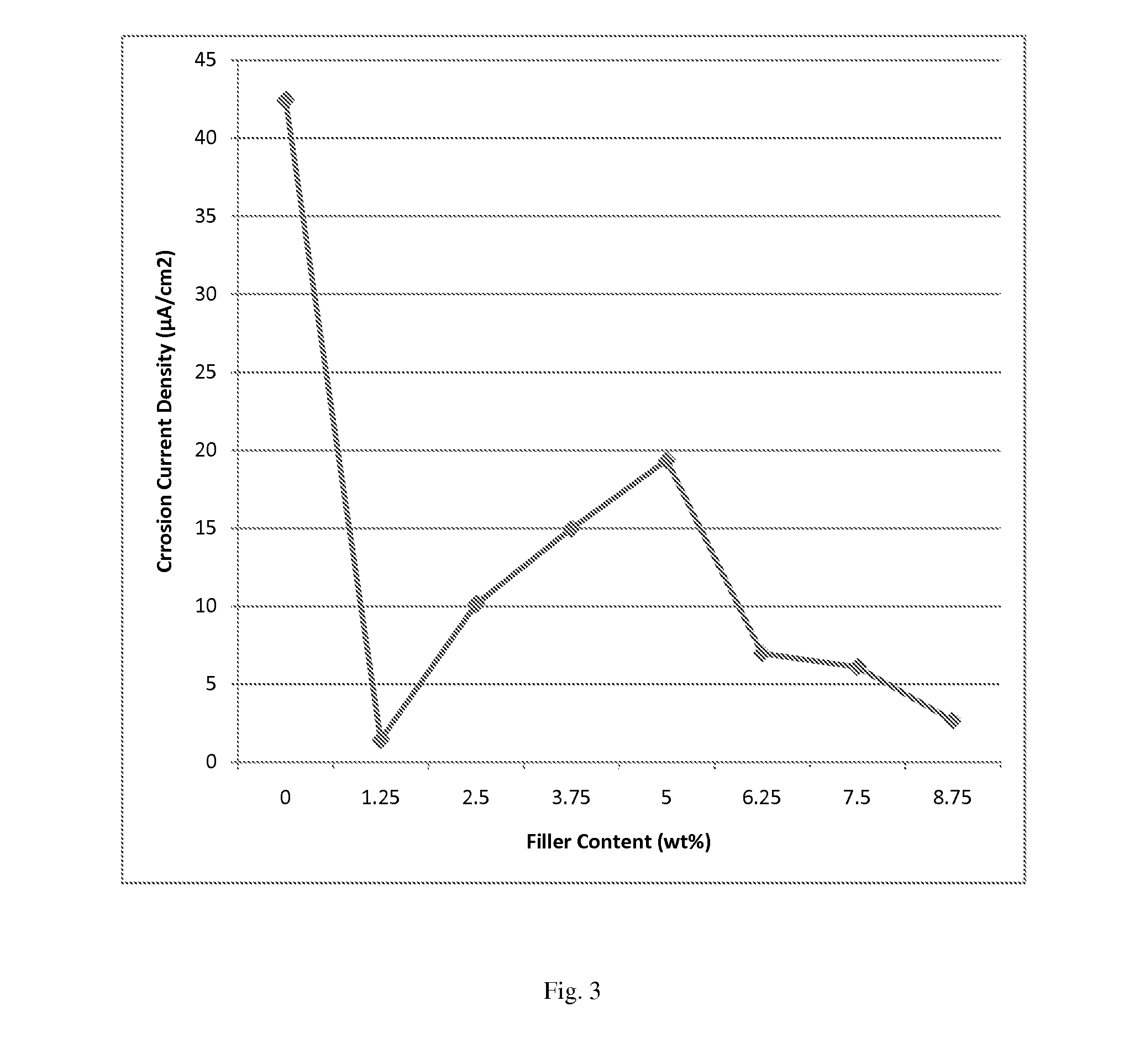Electrically conductive polymeric composite material
a polymer composite material and polymer technology, applied in the direction of conductive materials, carbon-silicon compound conductors, organic conductors, etc., can solve the problems that the prior art conductive materials cannot offer combined characteristics such as low weight, high stiffness, chemically corroded resistivity and electrical conductivity,
- Summary
- Abstract
- Description
- Claims
- Application Information
AI Technical Summary
Benefits of technology
Problems solved by technology
Method used
Image
Examples
Embodiment Construction
Volume Resistivity Test
[0018]Volume resistivity is measured by four-probe technique according to ASTM D991 standard. Source voltage, voltage of specimen and current passed through electrodes are measured by three multi-meters. Volume resistivity is calculated from potential decrease and sample characteristics by the following equation:
ρ=Vwdk / Il (1)
Where:
[0019]ρ: volume resistivity, (Ω-Cm)
V: potential difference, V, across potential electrodes
I: current through the current electrodes, A
w: width of specimen
d: thickness of specimen
l: distance between potential electrodes
k: Factor depending on units of w, d and l, i.e., k is 0.001 if w, d and l are in millimeters and 0.0254 if they are in inches.
[0020]Samples are constructed with Carbon woven fabrics and Vinyl-ester resin with different percent of Carbon black filler. Variation of volume resistivity for various weight percent of filler is shown in Table 2. Also, volume resistivity change for various filler percent is plotted in FIG. 1....
PUM
| Property | Measurement | Unit |
|---|---|---|
| Fraction | aaaaa | aaaaa |
| Fraction | aaaaa | aaaaa |
| Fraction | aaaaa | aaaaa |
Abstract
Description
Claims
Application Information
 Login to View More
Login to View More - R&D
- Intellectual Property
- Life Sciences
- Materials
- Tech Scout
- Unparalleled Data Quality
- Higher Quality Content
- 60% Fewer Hallucinations
Browse by: Latest US Patents, China's latest patents, Technical Efficacy Thesaurus, Application Domain, Technology Topic, Popular Technical Reports.
© 2025 PatSnap. All rights reserved.Legal|Privacy policy|Modern Slavery Act Transparency Statement|Sitemap|About US| Contact US: help@patsnap.com



